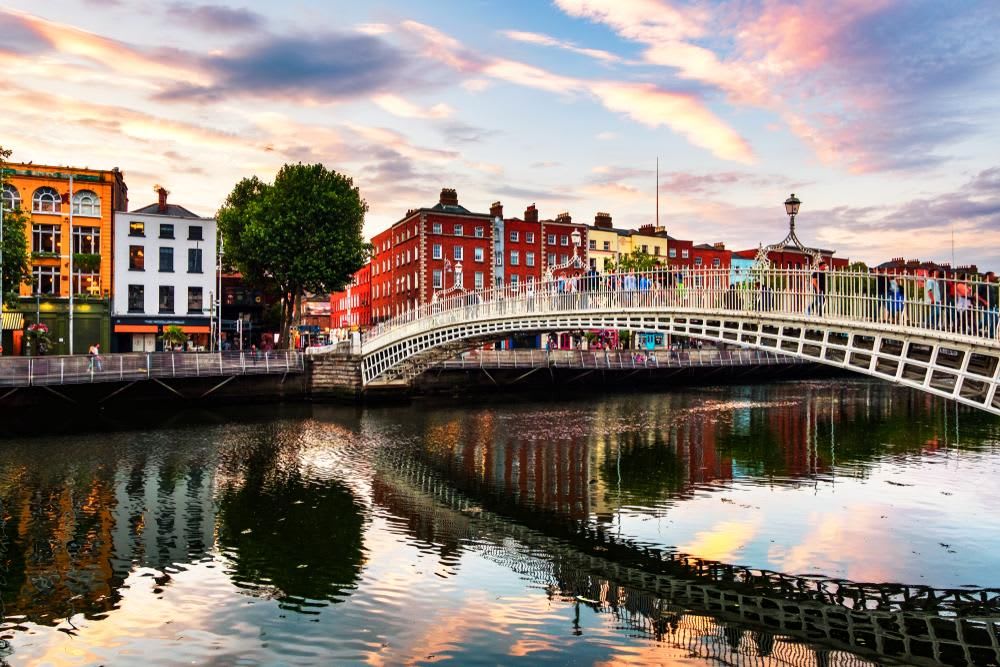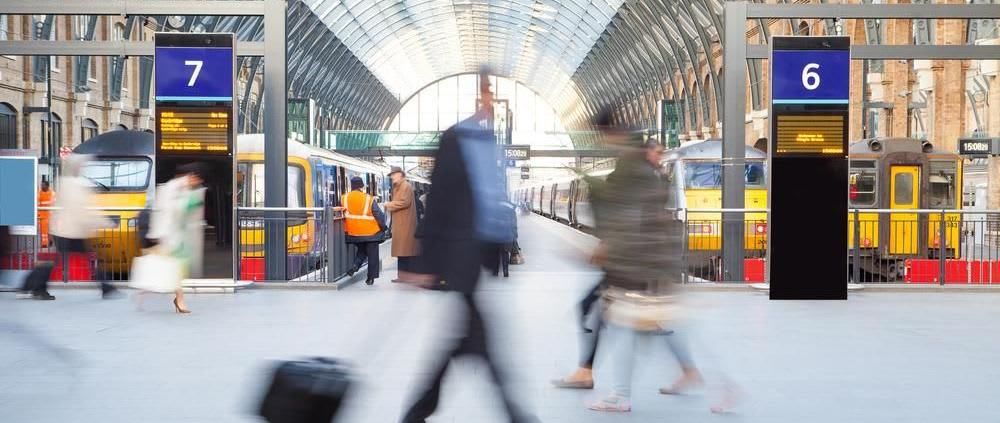Six Things To Know About Studying in Ireland
Ireland may conjure images of rolling green hills, rural cottages, dramatic cliffs, and even shamrocks, but it’s also a popular choice for international students looking for long and short-term academic programs. The first thing to know is that Ireland is both an island and a country. The island of Ireland is the second largest of the British Isles, located off the coast of mainland Europe. It contains two countries - Northern Ireland, which is a part of the United Kingdom, and the Republic of Ireland, an independent nation since 1922. Ireland’s capital, Dublin, was established in the seventh century, and has been a center for higher education since the late medieval period. Here are six other things to know about studying in Ireland.
- Education
- Study Abroad
- International News

Ireland may conjure images of rolling green hills, rural cottages, dramatic cliffs, and even shamrocks, but it’s also a popular choice for international students looking for long and short-term academic programs.
The first thing to know is that Ireland is both an island and a country. The island of Ireland is the second largest of the British Isles, located off the coast of mainland Europe. It contains two countries - Northern Ireland, which is a part of the United Kingdom, and the Republic of Ireland, an independent nation since 1922. Ireland’s capital, Dublin, was established in the seventh century, and has been a center for higher education since the late medieval period.
Here are six other things to know about studying in Ireland.
1. Ireland is home to innovative international universities
Ireland can hold its own when it comes to colleges and universities. Irish schools rank favorably In the 2019 US News and World Report Global rankings, the most comprehensive assessment in the world of the top 1,250 schools across 75 countries. Trinity College Dublin and University College Dublin rank among the highest, at 212th and 234th respectively, out of the 1,250.
Ireland also recently designated its first government-run technological university, as three institutes of technology merged to create Technological University Dublin. It is now the country’s third largest institution. It is all part of the Government’s “plan to drive regional economic growth and development under Ireland Project 2040 and to make Ireland the best education and training service in Europe by 2026.”
2. Ireland has a distinctive, beautiful culture
From dancing and music to history and food, the Irish have it covered when it comes to culture. You could spend a lifetime learning the history of the language itself… maybe while hiking about the island’s stunning countryside. Ireland has a lot to offer.
The Irish accent is world-famous, and the country boasts a wealth of linguistic experiences. While you will hear a lot of English in Ireland, you will also hear Irish (called Gaeilge in Ireland), which you’ve probably heard of, and Ulster-Scots, which you probably haven’t. Ulster-Scots is most common in Northern Ireland, though you’ll hear it in various parts of Ireland as well. While Ulster-Scots is often considered a dialect, the term also refers to a community of people who speak Ulster-Scots and have a distinct culture. Irish is spoken as a first language by people throughout Ireland, and is recognized as an official language by the European Union. Irish is a part of the Celtic language group Gaelic, and it’s one of the world’s oldest and most historic written languages. If you travel while you study, you’ll hear it and you’ll see it, too, alongside English on street signs and in restaurants.
Be sure to say “thank you” in any language to the bus drivers in Ireland, as it’s one of those strange customs that you wouldn’t know to do otherwise. Thanks and gratitude extend well beyond thanking a bus driver for a ride, though.
According to Culture Trip, the Irish also salute magpies. It’s a superstitious tradition going back generations to ward off bad luck. Some say good morning to magpies. It ties back to an old nursery rhyme, “One for Sorrow.”
Ireland’s mythology is more complicated than magpies, though. Fairy folklore in Ireland has a place in the stronghold of Irish imagination going back centuries to Ireland’s tribal groups. But don’t let yourself be fooled -- modern stereotypes might make Ireland’s mythical creatures seem cute and small, but the fairies -- or aos sí -- were neither diminutive nor darling. Their name in Irish means ‘people of the mounds’ and you’ll feel the magic of Ireland’s mythology when you explore historical sites, castles, cliffs, and ruins.
3. Diversity
For as many myths out there about Ireland, there are students. Last year, Dublin, Ireland’s capital city, ranked 14th in a “Best Student Cities Ranking” for student mix because of its “high concentration of students and high ratio of international students.”
Last year, The Irish Times reported that Ireland succeeds in diversity in other ways, too. Many schools also boast a diverse teaching staff and Ireland has also recently embraced gender-neutral accessible bathrooms. The Irish Times quoted Sandra Healy, head of diversity and inclusion at the equality office at Dublin City University (DCU), who said, “We’ve recently introduced a new gender identity policy toolkit, devised with Tanya Ní Mhuirthile of the School of Law and Government, and we have also engaged with the student LGBT society, TENI and BeLonG To as well. One of the areas we have focused on is the college environment, so we’ve introduced gender-neutral bathrooms in student hubs and we’re looking at how we can best manage student and staff records to be cognisant of sensitivities around gender identity.”
They are also looking at innovative ways to approach family leave and student retention, which allies with the country’s move towards gender parity. Though imbalance still exists, Ireland’s higher education system is working hard. Five of eight of the Republic’s universities achieved 40 percent gender balance on executive committees since 2015.
DCU isn’t alone in their efforts. Other schools are following suit and working hard to ensure that Ireland remains a desirable destination for students and faculty of all backgrounds.
4. Scholarship opportunities
The Government of Ireland recently released their International Education Scholarships, which award a €10,000 stipend and a full fee waiver to 60 students for one year of bachelor’s, master’s, or doctoral program. International students are eligible if they already have an offer for a place in an institution of Irish higher education.
The Government of Ireland isn’t the only source for scholarships. There are hundreds of opportunities from Irish higher education institutions and other organizations. Education Ireland keeps a running list of scholarship opportunities. If you’re an international student seeking funding, it’s always a good idea to contact your university to get a sense of what’s available.
5. Stay-back option
Ireland also offers a generous package to qualifying international students who want to stay in Ireland after graduation to find work.
Ireland’s Third-Level Graduate Program allows Irish-educated graduates who earned a degree from an Irish institution to remain in Ireland after their studies to seek graduate employment and apply for a permit.
To qualify, graduates need a Stamp 2 student immigration permission and must hold a current immigration registration card. They also need to apply within six months of being notified of their awarding institution.
Students cannot have exceeded the seven-year limit on their permission as a non-EEA national student. They can apply only twice and must provide evidence in the form of a parchment or letter of intent confirming award status.
Successful stay-back students can stay in Ireland up to two years before needing additional permissions.
6. Job prospects/earning potential
In February, The Irish Times reported that the chances of earning a well-paying job in Ireland after graduation ard high. Economic recovery is creating some serious opportunity for graduates’ employment prospects.
According to the Higher Education Authority, those who stay on for postgraduate qualifications like master’s degrees and PhD earn about €8,000 or $9,000 more than average graduates.
Jim Miley, director general of the Irish Universities Association, said that there was “clear added value” of higher education for society and for individuals, in terms of both employment opportunities and graduate salaries for graduates of Irish schools.
Bottom line? Starting salaries for graduates in Ireland are on the rise and employment rates are climbing.
All of this combined makes it no surprise that Ireland continually tops charts for international higher education and remains a popular choice for students from around the world. Last year, Forbes named Ireland as one of the top European countries for both ‘quality of education’ and ‘life and careers’.
Read related articles

Are International Students Immigrants? The Debate Explained

Six Things All International Students Should Do Before Traveling
